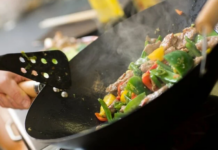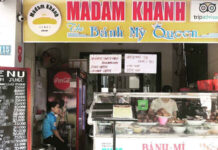
The secret to the unique appeal of roasted young rice cakes lies in their filling. The main ingredient is fresh young rice—a quintessential Hanoi delicacy during autumn—carefully selected and cleaned before being simmered with grated coconut. This combination creates a soft, sticky filling that’s both rich and refreshingly fragrant, capturing the essence of young rice.
Unlike other mooncake fillings that can be overly sweet, the young rice filling offers a balanced harmony: chewy, creamy, yet not cloying. Its subtle sweetness is complemented by hints of pandan leaf and fresh rice aroma, creating an elegant and refined flavor. Some describe it as “buttery and chewy like dairy, yet infused with the rustic charm of rural Vietnam,” offering a distinctly Asian experience. Each bite leaves a refreshing, invigorating sensation, akin to walking through a rain-soaked garden.
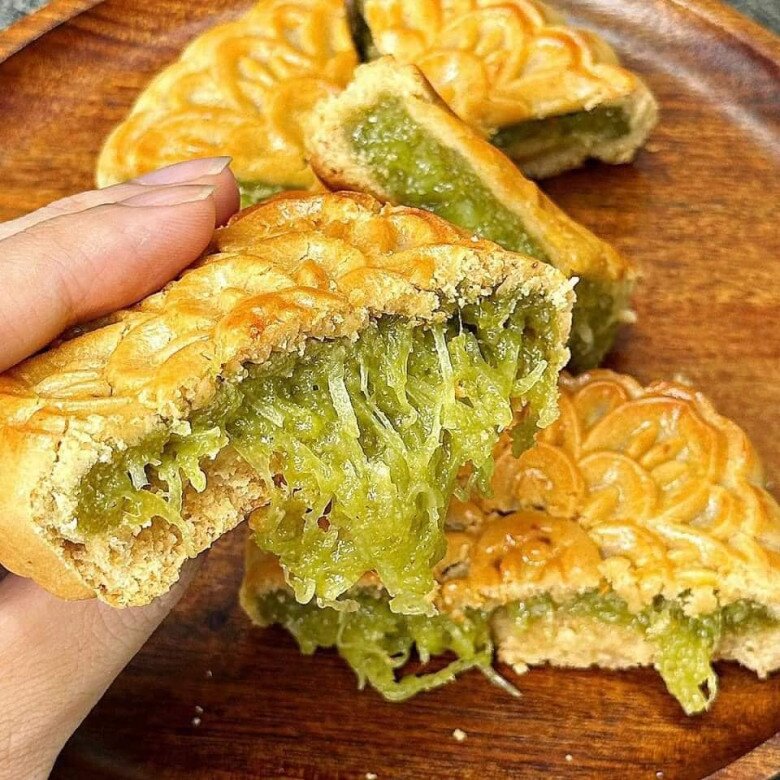
Crafting the perfect young rice filling requires meticulous attention to detail. The basic recipe includes: fresh young rice, long-strand grated coconut, sugar, coconut milk, pandan leaf extract (15g pandan leaves blended with 150g water, then strained), cooking oil, glutinous rice flour, and optional pandan essence for color. First, the grated coconut is marinated in sugar for 30 minutes. All ingredients (except glutinous rice flour) are mixed, rested for 15 minutes, then stir-fried over medium heat. Once the mixture becomes soft and cohesive, it’s removed from heat, cooled, and combined with glutinous rice flour. The filling is then chilled for 2 hours before use.
Shaping the cake involves precise ratios: a 1:1 filling-to-crust ratio ensures balance and stability. For a 150g cake, this means 80g filling and 70g crust. The crust is made from 240g all-purpose flour, 160g sugar syrup, one egg yolk, and 30g oil. Before baking, the surface is brushed with a mixture of egg yolk, fresh milk, and oil for a golden finish.
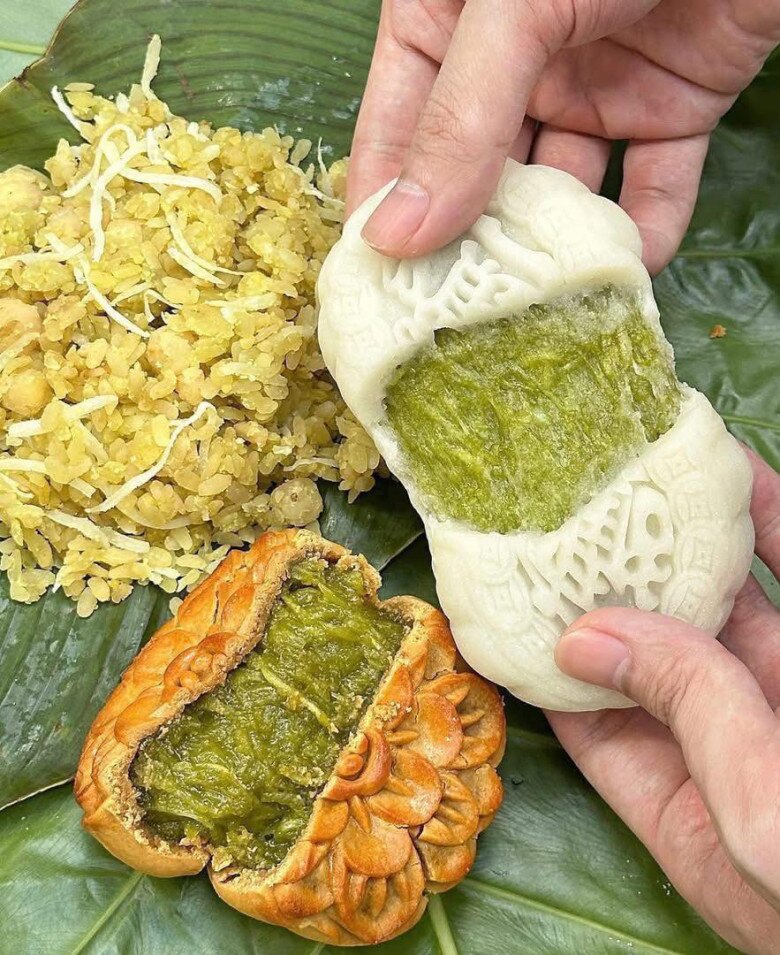
Many note that roasted young rice cakes offer a unique experience compared to traditional fillings like mixed nuts, mung bean, or lotus seed. The exceptionally soft filling sometimes results in less-than-perfect shapes, but this very “imperfection” charms those who cherish the natural flavor of young rice.
Devotees call it the “ultimate love” of Mid-Autumn Festival, especially for fans of Hanoi’s young rice. The chewy filling, paired with crunchy coconut, delivers a sweet, refreshing taste. Though the cake’s shape may not be flawless, its flavor wins over even the most discerning palates.

Available online and in select bakeries in Hanoi and Ho Chi Minh City, these cakes range from 70,000 to 90,000 VND each, depending on size and ingredients. Compared to premium mooncakes, this price is reasonable, making it accessible to those eager to try this trending treat. Its online presence has fueled its popularity, especially among young food enthusiasts.
The cake’s appeal is deeply tied to Hanoi’s young rice, a symbol of autumn and traditional villages like Vòng. By incorporating young rice into mooncakes, this innovation not only boosts its commercial value but also enriches Vietnamese culinary culture.
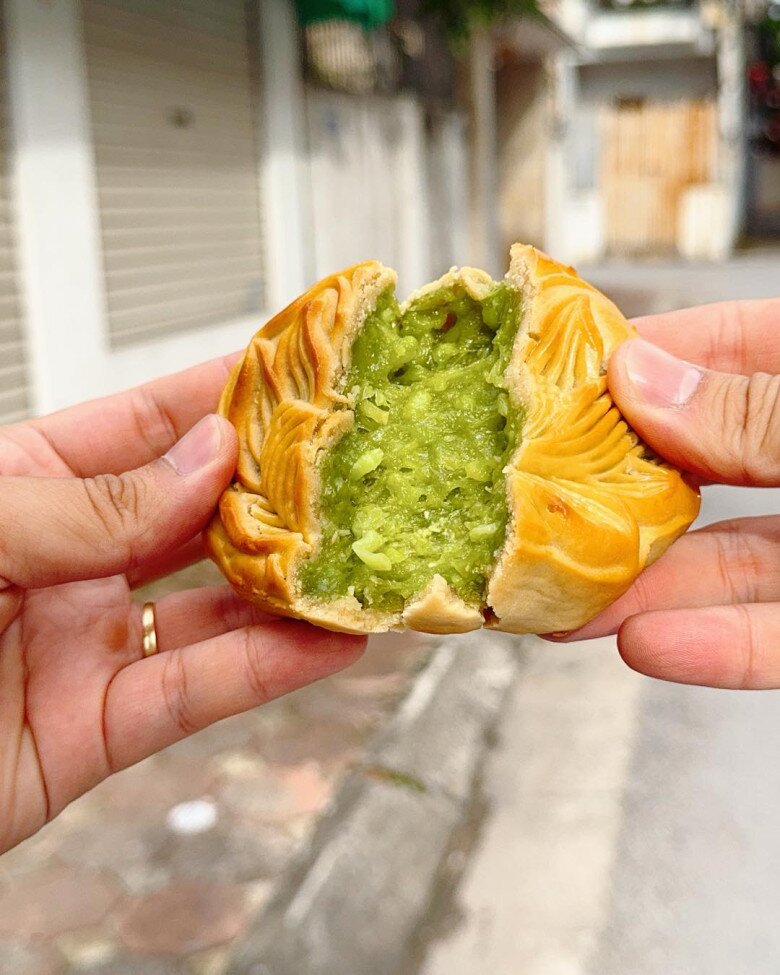
Since 2022, roasted young rice cakes have remained a Mid-Autumn favorite, proving their enduring appeal. Their creamy, fragrant filling evokes the essence of Hanoi’s autumn, blending tradition with innovation. This harmonious fusion has made them a new symbol of the Reunion Festival.
Today, social media buzzes with offers for these cakes, priced between 70,000 and 90,000 VND each. Their sustained popularity confirms their status as a culinary star, set to shine once again this Mid-Autumn.







